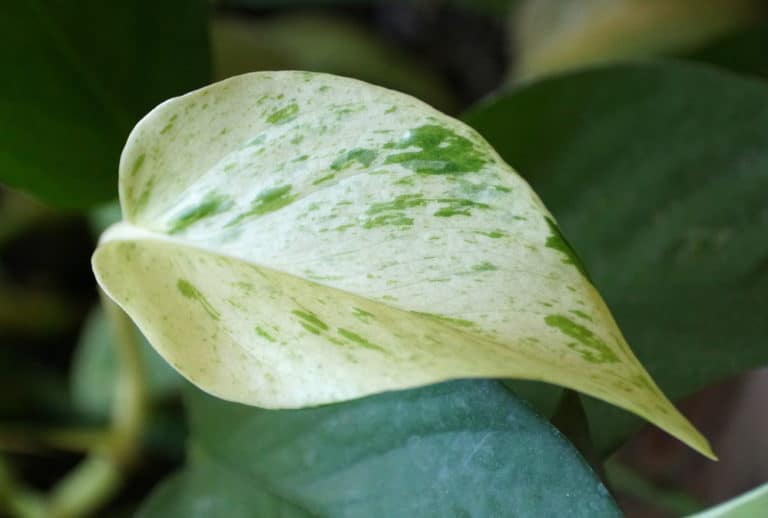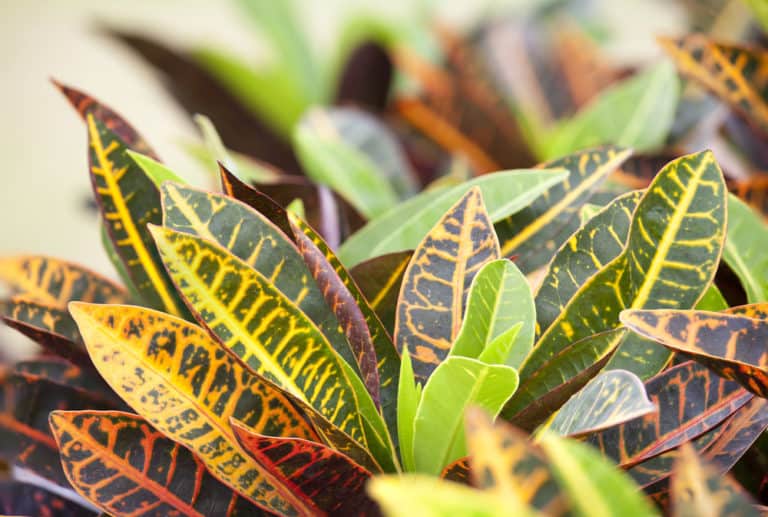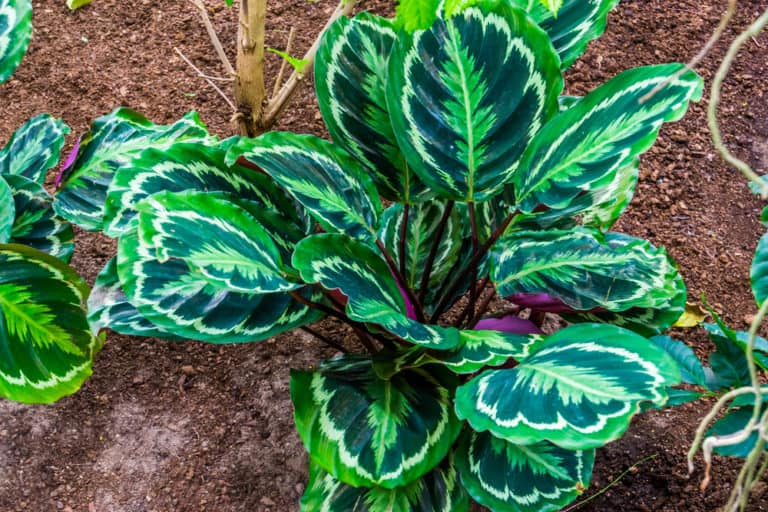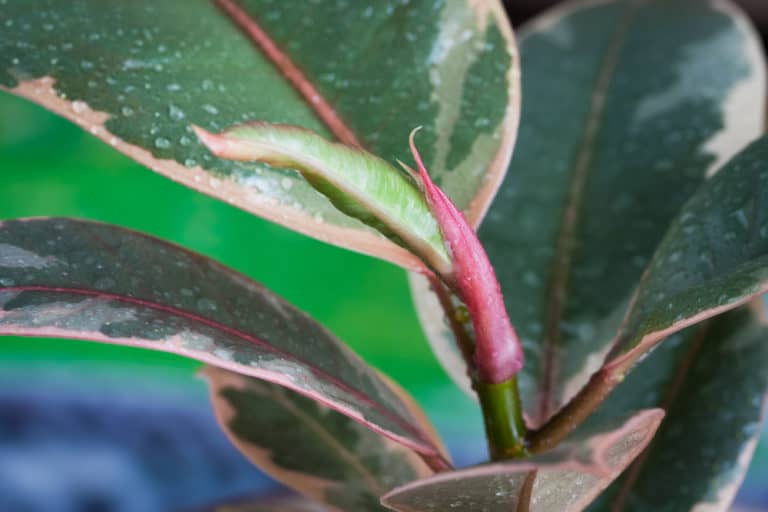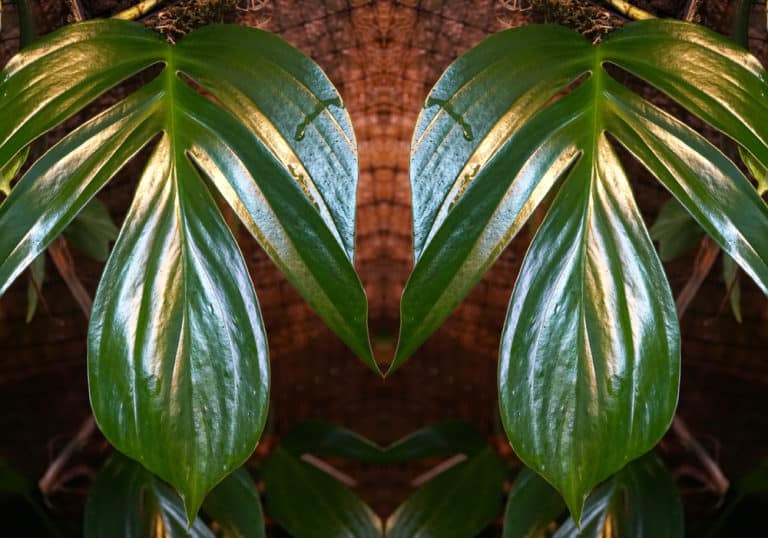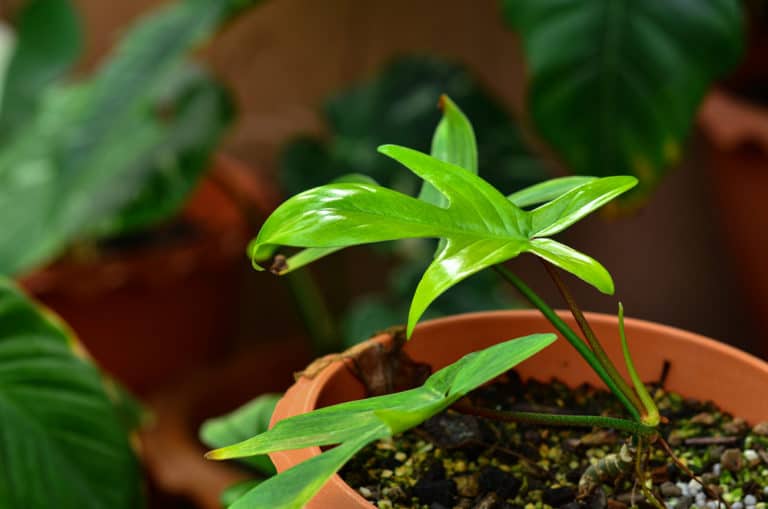Phlebodium Aureum ‘Blue Star Fern’ Care Guide (2024)
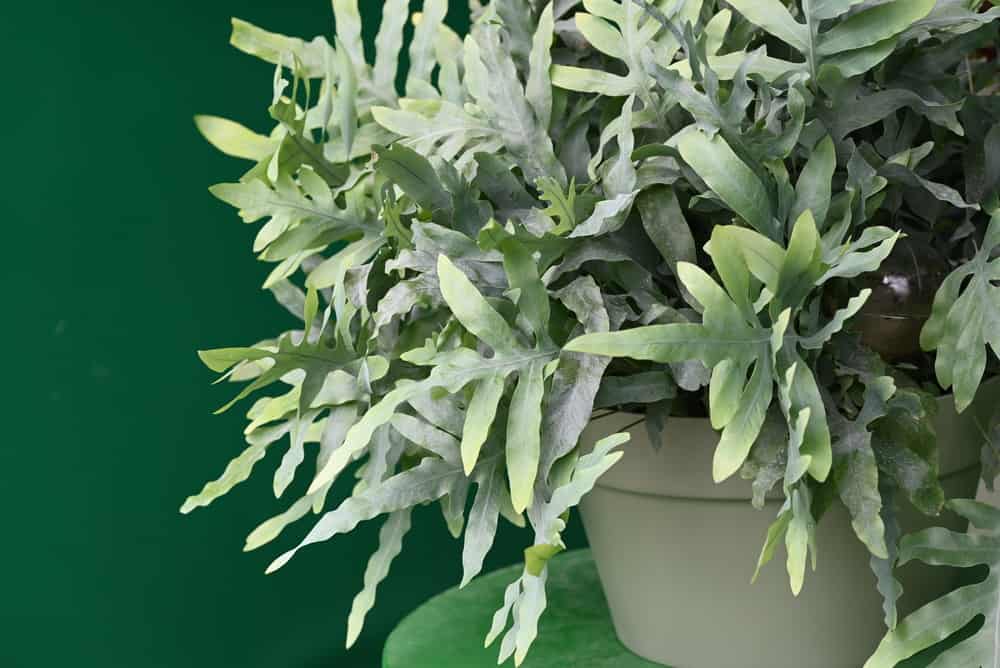
The blue star fern is an easygoing houseplant that will add tropical air to your home.
Also known as the Phlebodium aureum, its blue-green evergreen leaves will quickly fill out.
Whether you’re looking for a good terrarium plant or a bushy foliage plant to tuck into a corner, this is a perfect choice.
| Scientific Name | Phlebodium aureum |
| Common Name | Blue Star Fern, Cabbage Palm Fern, Gold Foot Fern |
| Light | Bright indirect sunlight |
| Watering | Water if the top inch of soil is dry |
| Temperature | 57 to 81°F (14 to 27°C) |
| Hardiness Zone | 8b to 13a |
| Humidity | 75% |
| Soil Type | Loose, well-draining |
| Soil pH | 5.6 to 6 (acidic) |
| Fertilizing | A balanced feed every 2 to 3 months in spring and summer |
| Repotting | Every 1 or 2 years |
| Pruning | Beginning of the growing season |
| Propagation | Division |
| Toxicity | Not toxic to humans and pets |
| Mature Size | 24 inches as a houseplant |
| Bloom Time | Does not flower |
What’s Unique About Blue Star Fern?
The blue star fern plant is native to a wide stretch of the eastern seaboard of the Americas, ranging from Georgia and Florida through the Caribbean and down to Brazil.
Blue star fern plants grow in subtropical and tropical rainforests, where they attach themselves to trees and draw their nutrients from the air and water.
Its distinctive blue-green fronds grow in abundance, making this epiphytic plant perfect for filling in a gap in your indoor garden.
As well, growing blue star fern is easy, even for beginners, as it is undemanding in its care requirements.
Even better, this non-toxic foliage plant is also an excellent air purifier.
Blue Star Fern Care
In the rainforests where the blue star fern originates, the environment is hot, steamy, and shady.
Your Phlebodium aureum care should try to provide something similar.
Good blue star fern plant care involves keeping this plant in a bright location with high temperatures and humidity, with frequent watering and occasional fertilization.
Light
In its native rainforests, Phlebodium aureum grows on the trunks of tall trees, so it grows in the shade of their canopy.
Blue star fern light requirements are pretty forgiving; while they prefer to be in bright, indirect light, or between 10,000 and 20,000 lux, they will also put up with more shade.
Phlebodium aureum light needs can be easily met without using supplemental lighting. Find a spot in a north or east-facing window to set down its pot.
If you only have a west or south exposure, you need to make sure that your Phlebodium aureum is not in full sun, which is the one lighting that it will not tolerate.
Watering
While Phlebodium aureum is a rainforest native and therefore used to lots of water, it grows on the trunks of trees, so it did not evolve to live in wet soil.
Your blue star fern watering needs to keep the soil consistently moist but never wet. If the roots of this epiphytic plant can’t breathe, it can actually die.
Water Phlebodium aureum whenever the top inch of the soil has dried out. Water towards the edge of the pot as the crown can rot easily.
Rather than have a regular schedule for watering, have a regular schedule for checking the soil moisture and only water when it’s ready.
Phlebodium aureum’s watering needs are best met with distilled or rainwater, as the chemicals in tap water can damage the foliage.
Temperature
The blue star fern is a native of the subtropics and tropics, and so you need a warm temperature for Phlebodium aureum.
The blue star fern temperature range is from 57 to 81°F (14 to 27°C).
Phlebodium aureum has a limited temperature tolerance below 50°F (10°C). It should only be exposed to those levels for a brief time.
Keep your blue star fern out of drafts and away from cold windows.
As would be expected for a plant from a hot climate, Phlebodium aureum has no frost hardiness. If you move it outdoors for the summer in a temperate zone, bring it in when temperatures start to fall.
Humidity
If your indoor humidity is below 40%, your Phlebodium aureum will not be happy. It evolved in the rainforests with consistent rainfall and a steamy atmosphere.
The ideal humidity for Phlebodium aureum is 75% or so, but you don’t have to provide quite that humidity level in your home.
However, blue star fern humidity requirements are still pretty high. You should aim for about 60% for the healthiest growth.
A bathroom is a great location for your Phlebodium aureum, but if you don’t have the room for it, try grouping all your indoor plants together. That can create a moister microclimate all on its own.
Adding a small humidifier will boost the humidity for all your plants.
Soil
In its native habitat, Phlebodium aureum doesn’t grow in soil, but rather attaches itself to the bark of trees.
At most, its rhizomes would have a little bit of rotting organic matter in a knothole.
When choosing a blue star fern soil, you want something that is very loose and well-draining, with lots of organic matter.
Aim for a pH level for Phlebodium aureum of 5.6 to 6, or acidic.
If you want to buy commercial soil for Phlebodium aureum, an orchid soil mix is a good choice, as they have very similar needs.
Otherwise, you can make your own mix with equal parts potting soil, perlite, and orchid bark.
Fertilizer
While you do not need to use a lot of blue star fern fertilizer, an occasional boost can help maintain your plant’s healthy leaves.
Once every couple of months in spring and summer should be enough.
Use a liquid fertilizer for Phlebodium aureum with a standard fertilizer ratio of 10-10-10.
Dilute it to half the recommended strength and pour it around the edge of the pot, avoiding the crown.
Always fertilize shortly after you’ve watered the soil to ensure even distribution.
In the fall, as your Phlebodium aureum is entering its dormancy, flush any residual fertilizer from the soil by running a stream of water through it for about 10 minutes.
Potting & Repotting
You will know when it’s time for blue star fern repotting. Just watch for the rhizomes starting to crowd the soil.
In fact, if your Phlebodium aureum is in a plastic pot, you may actually see them bending it out of shape!
Usually, repotting Phlebodium aureum is necessary every 1 or 2 years.
If you are not dividing your blue star fern, you should go up one pot size. Choose a plastic or glazed ceramic container, as a clay pot will not retain the soil moisture as well.
Drainage holes are a must.
Always use fresh potting soil to prevent the build-up of salts and possible disease.
Pruning
You may choose to do some blue star fern pruning to improve the shape of this spreading plant.
It isn’t necessary, but if you need to keep your Phlebodium aureum within bounds you can trim the outer leaves off.
In early spring, cut out any older fronds that look out of place.
You should trim off any dead or damaged fronds whenever they occur throughout the year.
Not only do they mar the appearance of your Phlebodium aureum, but they also harbor disease and can attract pests.
When cutting Phlebodium aureum fronds, use sharp, sterilized scissors and cut them right where they grow out of the rhizomes.
Propagation
The easiest way to propagate Phlebodium aureum is by root or rhizome division when you’re repotting.
The blue star fern rhizomes will send up new shoots as they mature, so you should be able to easily see where you can make root cuttings.
Remove the root ball from the pot, and either snap the rhizomes into several pieces, or cut them with a sharp knife. Make sure that each chunk has both roots and shoots.
Replant each new section in its own pot.
The other method of blue star fern propagation is more challenging.
You can remove spores once they have become brown and crispy and place them atop moist soil.
Keep them moist at all times, and in 2 to 5 months, you may see tiny new plants sprouting up.
Common Problems of Blue Star Fern
While there are not a lot of potential blue star fern problems, no houseplant is completely impervious to health issues.
However, most problems with Phlebodium aureum can be prevented with good cultural practices and solved by improving them.
As long as the leaves look good, your blue star fern should be fine.
Pests
You can usually head off any problems with blue star fern pests with one simple maintenance task.
Once a week, spray or wipe down the leaves of your Phlebodium aureum with a mixture of water and rubbing alcohol. That should keep the bugs away.
Mealybugs gather together under the leaves, looking like cotton batting. Rubbing alcohol will kill them.
Spider mites leave yellow bumps and sticky webs, even though the bugs themselves are hard to see. Take your plant to the sink and give all the foliage a good rinse to get rid of them.
Fungus gnats are little black flies that love moist soil. Put yellow sticky traps out to catch the adults, and drench the soil with a mixture of 1 part hydrogen peroxide to 4 parts water.
Diseases
Most blue star fern diseases are caused by too much moisture. You will have a healthier Phlebodium aureum if you keep the soil just moist, and don’t let water sit on the leaves.
Root rot will make leaves yellow, and stems soft. The roots themselves turn black with a foul odor. Cut off all infected parts and replant it in fresh soil in a disinfected pot.
Southern blight, unfortunately, cannot be cured. It’s a fungal disease that causes lower leaves to turn yellow and plants to collapse.
Rust and powdery mildew affect the leaves and are caused by damp conditions. Spray your plants with a neem oil or sulfur solution and improve the air circulation around your Phlebodium aureum.
Growing Problems
You may have some growing problems with your Phlebodium aureum that are caused by a less than ideal environment.
Luckily, you should be able to restore your sick plant just by improving its growing conditions.
Brown leaf tips may mean low humidity, too much fertilizer, or using hard water.
Dropping leaves can mean too much fertilizer as well or too much direct sun.
Crisp, brown leaves are also an indication that your blue star fern is getting too much sun.
At the same time, if it’s only your older leaves turning brown, do not despair. It’s just the natural process of the oldest leaves dying off.
Toxicity of Blue Star Fern
Phlebodium aureum is not toxic to humans or pets.
Because of its lack of toxicity, it’s a perfect plant to grow in a home with children and pets.
However, even a non-toxic plant can present risks to the small members of your household, so you should still take some precautions.
For Humans
Because Phlebodium aureum is not toxic to humans, you can keep it in your home without going to great lengths to keep it out of reach of your children.
However, even non-toxic plants can still be a source of trouble for children, especially toddlers who want to get into everything.
Any pesticides, fungicides, or fertilizers that you may use on your plants, even if they are organic, should not be ingested by children.
You also don’t want your kids damaging your blue star fern through rough handling.
It’s always best to establish early that all houseplants are off-limits to children.
For Pets
While blue star fern plants are not at all toxic to pets, plants in general can still be a problem for cats and dogs.
Both felines and canines are carnivores, and their digestive systems have evolved to deal with meat, not vegetables.
If your cat or dog eats too much Phlebodium aureum foliage, they could end up with vomiting and diarrhea for a few hours.
You won’t have to rush them in for emergency care, but it will still be pretty unpleasant while it lasts.
A hanging planter is a good way to enjoy your blue star fern and still keep it out of their reach.
Blue Star Fern Appearance
The blue star fern appearance is always going to be a little untidy and rambunctious. It’s part of its charm.
The unique blue-green foliage will add a new layer of color in your indoor garden.
While it will never flower, the spores that form on mature plants have an interesting look all their own.
Foliage
The foliage of blue star fern changes as the plant and leaves mature.
As a leaf unfurls from the rhizome, it is shaped like a sword, but over time they become deeply pinnated, with up to 35 lobes per leaf. They can be 1 to 2 feet long.
Phlebodium aureum leaves have a distinctive soft blue-green color.
They have a tough, leathery texture and a smooth surface. When the light shines through them they reveal a delicate pattern which adds to their appeal.
Each leaf can be expected to live for about a year, so you should keep them clean by wiping them down once a month with a soap and water solution.
Flowering
You will never see your blue star fern flowering. Blooming simply isn’t a thing that any fern does.
However, once your Phlebodium aureum has matured, it will produce spores in late autumn on older leaves. That’s the closest you will ever get to a Phlebodium aureum flower.
The groups of spores, or sori, appear on the underside of the fronds, spaced evenly in opposite pairs down each lobe.
At first they are golden yellow, then change first to orange and then to brown when they ripen.
The spores last for a month or so before they drop off.
You can try propagating the spores to produce more Phlebodium aureum plants, or just let them be.
Size and Growth
The mature size of blue star fern grown as a potted plant is about 2 feet, with a similar spread, although a plant grown outdoors can be as much as 4 feet tall.
Phlebodium aureum has a moderate growth rate, taking 5 years to reach maturity.
Each individual frond sprouts from the fuzzy gold rhizomes that sit on the soil surface.
It’s best to rotate your Phlebodium aureum pot on a regular basis to keep it growing evenly.
As your blue star fern matures and develops its pinnated fronds, they will start to flop. Don’t fight this tendency, but instead find a place where its leaves can cascade down.
Blue Star Fern Fragrance
There is no blue star fern fragrance. There are no flowers to produce scent, and the foliage has no smell.
However, Phlebodium aureum is a good natural air purifier, so growing it in your home will improve your air quality.
As well, plants with no scent are actually preferred in many different public settings where the risks to people with fragrance allergies need to be considered.
Because blue star fern is also non-toxic and easy to care for, it is a good choice in those places.
The one thing that may cause an issue is that some people can have an allergic reaction to breathing in spores.
Suggested Uses for Blue Star Fern
A blue star fern is a great choice for a variety of settings, both indoors and outside.
If you garden in a subtropical or tropical zone, you can grow your Phlebodium aureum outdoors year-round, where it can be expected to get as tall and wide as 4 feet.
Indoors, it can be grown as a terrarium plant for a few years before it gets too large, and then you could move it to a hanging planter.
Phlebodium aureum will love the extra humidity in a bathroom.
It’s also perfect for a slightly shady corner that needs something to fill it in.
FAQ
What is blue star fern?
The blue star fern, or Phlebodium aureum, is an epiphytic fern native to the subtropical and tropical rainforests of the eastern seaboard of the Americas.
How to identify blue star fern?
The blue star fern has distinctive blue-green fronds that start out sword-shaped and then become deeply pinnated on mature plants, growing in an untidy, bushy clump.
How to care for blue star fern?
The blue star fern should be grown in bright, indirect light in consistently moist soil in a warm and humid environment. Water regularly and feed occasionally.
How to grow blue star fern indoors?
The blue star fern can be grown as a terrarium plant when young. It is suited to growing in a hanging planter when it develops its mature form.
How to grow blue star fern outdoors?
The blue star fern can be grown outdoors in the ground or containers year-round in zones 8b to 13a, or taken outdoors in the summer months in temperate zones.
How fast does blue star fern grow?
The blue star fern has a moderate to slow growth rate, taking 5 years to reach its mature form. You may see about one new frond a month.
How tall does blue star fern grow?
The blue star fern can grow up to 2 feet tall with a spread of 3 feet when grown indoors, or up to 4 feet with a 6 foot spread outdoors.
How to make blue star fern grow faster?
The blue star fern will grow its fastest in a bright spot out of the full sun with hot temperatures, high humidity, and regular watering.
How to stake blue star fern?
The blue star fern should not be staked, as it is naturally a bit floppy and that’s part of its charm. It’s well-suited to growing in a hanging planter when mature.
How to pot blue star fern?
The blue star fern should be planted in loose, well-draining soil with lots of organic matter, in a plastic or glazed pot to conserve soil moisture.
How to revive blue star fern?
If your blue star fern has dried out, cut off all dead foliage and cover the plant and pot with a plastic bag for a few weeks to see if it can recover.
Why is my blue star fern dying?
Your blue star fern may have root rot from overwatering. Cut off all affected parts and replant it in fresh, porous soil in a disinfected pot.
Why is my blue star fern drooping?
Your blue star fern may be drooping because it is not getting enough light. Move it to a brighter location while still keeping it out of the full sun.
How cold can blue star fern tolerate?
The blue star fern cannot tolerate temperatures below 50°F (10°C) for any length of time without suffering damage to its leaves, and freezing temperatures will kill it.
How to get rid of pests on blue star fern?
Most pests can be discouraged from eating your blue star fern by wiping down the leaves periodically with a solution of water and rubbing alcohol.
Is blue star fern toxic to cats?
No, the blue star fern is not toxic to cats. However, cats are naturally carnivores and if they try to digest too much plant matter, they may have vomiting and diarrhea.
Is blue star fern toxic to dogs?
No, the blue star fern is not toxic to dogs, but because a dog’s digestive system has evolved to handle meat, too much foliage can cause gastrointestinal distress.
Is blue star fern toxic to children?
No, the blue star fern is not toxic to children, but they should be discouraged from handling the plant because of the chemicals you may have used.
Is blue star fern toxic to humans?
No, the blue star fern is not toxic to humans. However, if you have an allergy to spores, you may have to isolate your plant when it produces them in the autumn.
Does blue star fern have a scent?
The blue star fern has no scent, so it is suitable for planting in settings where people with fragrance sensitivities or allergies may be exposed to them.

